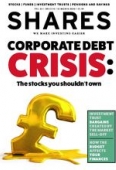Archived article
Please note that tax, investment, pension and ISA rules can change and the information and any views contained in this article may now be inaccurate.
What the Budget and UK rate cut means for markets and investors

The Bank of England and the Treasury managed a one-two punch on 11 March as interest rates were cut by 50 basis points to a record low of 0.25% and hundreds of billions of pounds of new spending was announced.
This did little to boost sentiment in the wider market as ongoing coronavirus fears and a sell-off in the US overshadowed the news, despite the provision of £30bn for coronavirus relief in the Budget.
However, some sectors and stocks did get a boost. Companies with exposure to the infrastructure space look to be big winners. Kier (KIE) and Balfour Beatty (BBY) enjoyed double-digit gains as, in a widely expected move, significant outlays were announced on roads, rail, hospitals and broadband.
Motorway crash barrier manufacturer Hill & Smith (HILS) was in demand, while companies with exposure to the broadband space like BT (BT.A) and Spirent Communications (SPT) also advanced.
The abolition of VAT on digital books boosted publishing firm Bloomsbury (BMY), up 6.7% to 239p as investors priced in a potential boost to sales from the move.
The plans announced by new chancellor Rishi Sunak also represented a significant shift in policy for the Conservatives with £175bn in total in new expenditure over the course of the next five years.
PwC chief economist John Hawksworth says Sunak is taking a calculated risk by committing to significantly higher spending now when there are many economic uncertainties ahead ‘not just in relation to Covid-19, but also the UK’s future trading relationship with the EU and the wider global economic environment’.
There were also changes to investment tax breaks. While the annual allowance for adult ISAs will remain at £20,000 in the new tax year, families will be able to save more into Junior ISAs and Child Trust Funds where the allowance more than doubles from £4,368 to £9,000.
Pension tax breaks will be more generous for higher earners. The income threshold at which tax relief on pension contributions starts to shrink will rise from £110,000 to £200,000. The standard tax-free annual allowance on pension contributions is currently £40,000 and starts to taper down to £10,000 for those earning more than £110,000.
Raising the threshold is particularly beneficial to senior doctors, many of whom have been turning down extra shifts for fear of high tax bills.
However, the changes in the new tax year will also see the minimum level to which the annual allowance can taper down reduced from £10,000 to £4,000 for individuals with total income including pension accrual over £300,000.
Important information:
These articles are provided by Shares magazine which is published by AJ Bell Media, a part of AJ Bell. Shares is not written by AJ Bell.
Shares is provided for your general information and use and is not a personal recommendation to invest. It is not intended to be relied upon by you in making or not making any investment decisions. The investments referred to in these articles will not be suitable for all investors. If in doubt please seek appropriate independent financial advice.
Investors acting on the information in these articles do so at their own risk and AJ Bell Media and its staff do not accept liability for losses suffered by investors as a result of their investment decisions.

 magazine
magazine









